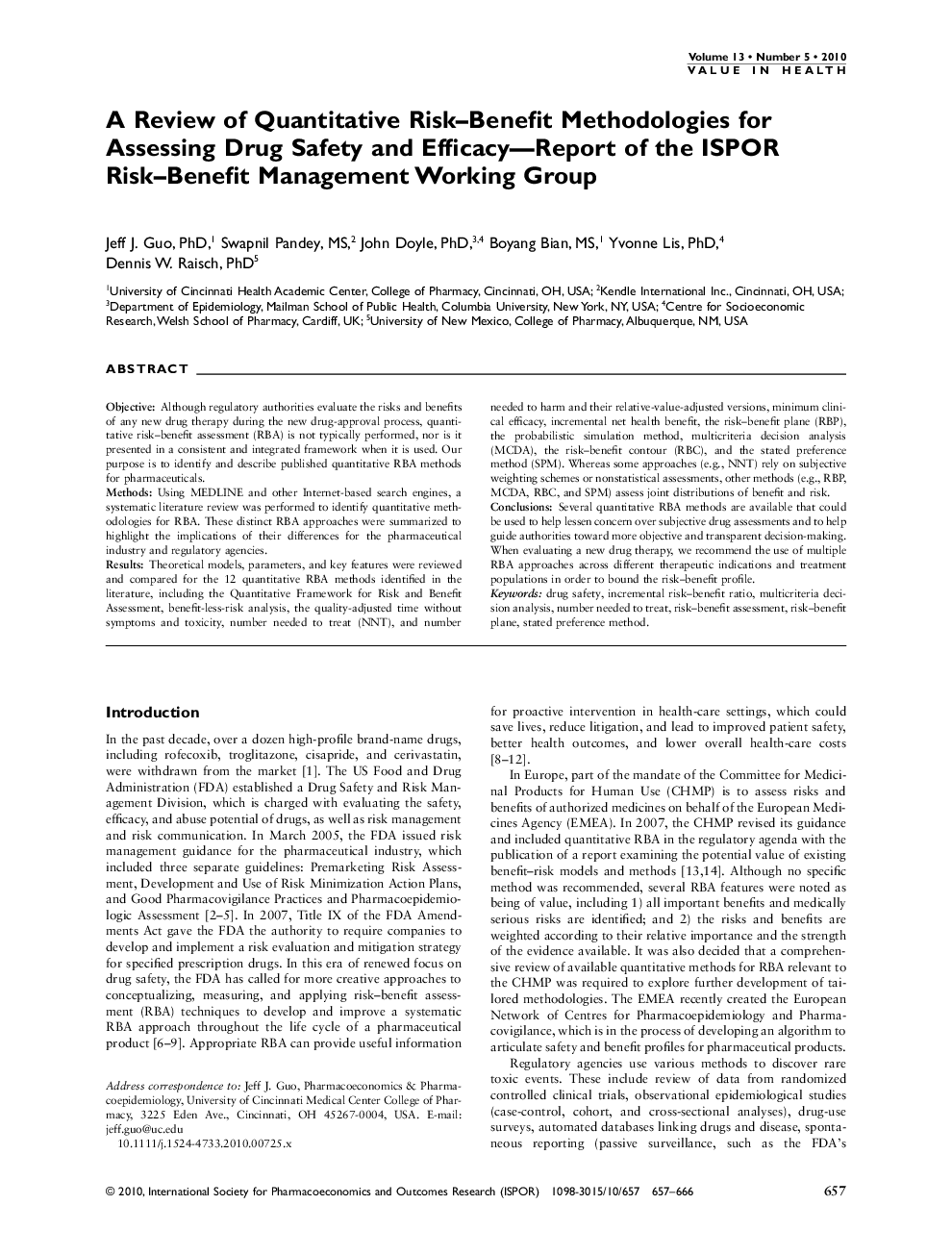| کد مقاله | کد نشریه | سال انتشار | مقاله انگلیسی | نسخه تمام متن |
|---|---|---|---|---|
| 989699 | 935450 | 2010 | 10 صفحه PDF | دانلود رایگان |

ObjectiveAlthough regulatory authorities evaluate the risks and benefits of any new drug therapy during the new drug-approval process, quantitative risk–benefit assessment (RBA) is not typically performed, nor is it presented in a consistent and integrated framework when it is used. Our purpose is to identify and describe published quantitative RBA methods for pharmaceuticals.MethodsUsing MEDLINE and other Internet-based search engines, a systematic literature review was performed to identify quantitative methodologies for RBA. These distinct RBA approaches were summarized to highlight the implications of their differences for the pharmaceutical industry and regulatory agencies.ResultsTheoretical models, parameters, and key features were reviewed and compared for the 12 quantitative RBA methods identified in the literature, including the Quantitative Framework for Risk and Benefit Assessment, benefit-less-risk analysis, the quality-adjusted time without symptoms and toxicity, number needed to treat (NNT), and number needed to harm and their relative-value-adjusted versions, minimum clinical efficacy, incremental net health benefit, the risk–benefit plane (RBP), the probabilistic simulation method, multicriteria decision analysis (MCDA), the risk–benefit contour (RBC), and the stated preference method (SPM). Whereas some approaches (e.g., NNT) rely on subjective weighting schemes or nonstatistical assessments, other methods (e.g., RBP, MCDA, RBC, and SPM) assess joint distributions of benefit and risk.ConclusionsSeveral quantitative RBA methods are available that could be used to help lessen concern over subjective drug assessments and to help guide authorities toward more objective and transparent decision-making. When evaluating a new drug therapy, we recommend the use of multiple RBA approaches across different therapeutic indications and treatment populations in order to bound the risk–benefit profile.
Journal: Value in Health - Volume 13, Issue 5, July–August 2010, Pages 657-666